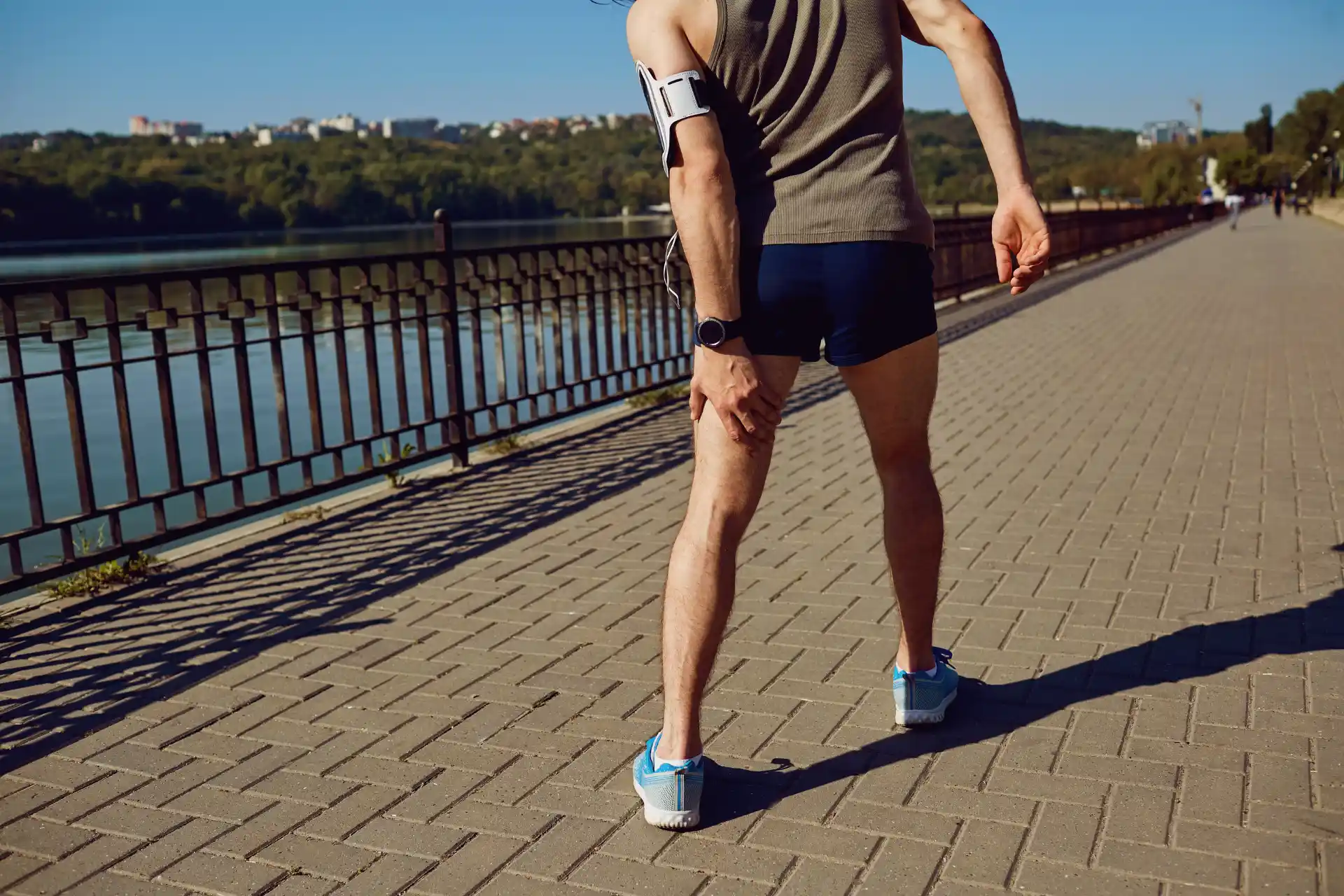Understanding a Supraspinatus Tear
What is the Supraspinatus Muscle?
The supraspinatus muscle is one of the four muscles that make up the rotator cuff in your shoulder.
This small, but vital muscle sits at the top of your shoulder blade and stretches over the top of the shoulder joint. Its primary function is to help lift your arm away from your body and stabilize the shoulder joint.
A healthy supraspinatus muscle ensures smooth arm movements and supports various activities ranging from everyday tasks to athletic endeavors.
Causes of a Supraspinatus Tear
A supraspinatus tear can occur from several causes, and understanding them can help you take measures to prevent this injury. Here are the main causes:
- Acute Injury: A direct blow to the shoulder or a sudden forceful movement can tear the supraspinatus muscle. Falls, heavy lifting, or traumatic accidents are typical examples.
- Overuse: Repetitive motions, especially those involving lifting the arm, can cause wear and tear over time. This is common among athletes like swimmers, tennis players, and weightlifters, as well as those in professions involving frequent overhead activities.
- Aging: As you age, the tendons in your rotator cuff, including the supraspinatus, can degenerate, making them more susceptible to tears. This condition is known as rotator cuff tendinopathy.
- Impingement Syndrome: This condition occurs when the supraspinatus tendon gets pinched under the acromion (the top part of the shoulder blade). Continuous impingement can lead to inflammation and eventual tears.
- Poor Posture: Slouching or maintaining a poor posture for extended periods can contribute to muscle imbalance and increased stress on the supraspinatus tendon, leading to tears.
By understanding the supraspinatus muscle and the common causes of tears, you can take proactive steps to maintain shoulder health and prevent injury.
If you suspect a tear, consult a healthcare professional for an accurate diagnosis and appropriate treatment options.
Explore our articles on related shoulder conditions that may cause pain and instability such as adhesive capsulitis, shoulder strain, and shoulder tendinopathy.
Treatment Options for Supraspinatus Tears
When dealing with a supraspinatus tear, it's vital to understand the available treatment options. These include initial management steps and more advanced medical interventions.
These treatment options should be treated as a general guideline, always consult with a healthcare professional for personalized guidance on shoulder pain treatment that is right for you.
Initial Steps for Managing the Injury
Early management of a supraspinatus tear can help minimize pain and prevent further damage. Here are the first steps you should take:
- Rest: Avoid activities that cause pain, especially overhead movements.
- Ice Application: Apply an ice pack to the affected area for 15-20 minutes several times a day to reduce swelling.
- Compression: Use an elastic bandage to compress the shoulder, helping to reduce swelling and provide support.
- Elevation: Keep your shoulder elevated to reduce swelling.
These steps form the basis of the RICE method (Rest, Ice, Compression, Elevation), a commonly recommended approach for managing soft tissue injuries.
Medical Interventions for a Supraspinatus Tear
Depending on the severity of your tear, as assessed by a rotator cuff injury test or other diagnostic methods, medical treatments may be necessary.
Here are some common medical interventions:
- Physical Therapy: Targeted physical therapy for shoulder pain, emphasizing range-of-motion and strengthening exercises, is key for rehabilitation.
- Medications: Nonsteroidal anti-inflammatory drugs (NSAIDs) can help manage rotator cuff pain and inflammation.
- Corticosteroid Injections: Administered by a healthcare professional, these can provide temporary pain relief and reduce inflammation.
- Platelet-Rich Plasma (PRP) Therapy: This newer technique involves injecting a concentration of your own platelets to promote healing.
- Surgical Intervention: In severe cases, surgery may be required to repair the tear. Some surgical options include arthroscopic tendon repair or rotator cuff surgery.
Selecting the appropriate medical intervention depends on factors such as your age, activity level, and the extent of the tear.
Always consult with a healthcare provider for a tailored treatment plan.
Seek RELIEF®
RELIEF® is a science-backed, targeted approach that targets dysfunctional soft tissue, also known as fascia, that surrounds the affected shoulder joint and rotator cuff.
The treatment utilizes hydrodissection—a fluid-based technique that gently separates and releases adhered soft tissue layers and fascia, which may contribute to shoulder pain and joint instability.1,2,3,4,5,6,7
RELIEF® is a minimally invasive alternative to traditional treatments—and requires no steroids, medication, surgery, anesthesia, or post-procedure immobilization.
For more information on different shoulder conditions and treatments, explore our articles on shoulder impingement and labral tear.
Healing and Rehabilitation Process
Physical Therapy Exercises for Supraspinatus Tear
Physical therapy is a cornerstone in the recovery process for a supraspinatus tear. Undertaking specific exercises can aid in restoring function and minimizing discomfort.
Stretching Exercises
- Pendulum Swings: Gentle circular movements using gravity to relax shoulder muscles.
- Cross-Body Stretch: Stretching the injured arm across your body to loosen the shoulder joint.
Strengthening Exercises
- External Rotation: Use a resistance band, keeping your elbow at a 90-degree angle, to rotate the arm outward.
- Internal Rotation: Similar to external rotation, but rotate the arm inward using a resistance band.
- Scapular Retraction: Pull your shoulder blades together while keeping your arms at your sides.
Range of Motion Exercises
- Passive Arm Circles: Use your non-injured arm to move the injured arm in small circles.
- Wall Climb: Slowly walk your fingers up a wall to elevate the injured arm gradually.
For a more comprehensive workout regime, refer to our article on rotator cuff exercises.
Importance of Rest and Gradual Progression
Adequate rest is crucial after sustaining a supraspinatus tear. While exercises are important, excessive strain can exacerbate the injury. Incorporate rest intervals within your regimen to allow the muscle to recover.
Gradual progression ensures that you don't overstrain your muscles, paving the way for successful healing.
Rest and Ice
- Initial Rest: Limit activities that strain your shoulder. Use a sling if required.
- Ice Packs: Apply ice to the affected area for 15-20 minutes several times a day to reduce inflammation.
Gradual Progression
- Activity Modification: Gradually resume activities while being mindful of any pain or discomfort.
- Progressive Loading: Slowly increase the intensity and duration of exercises to build strength without overloading the injured muscle.
Monitoring your progress and adjusting exercises accordingly can prevent future injuries.
Seek guidance from a medical professional before starting any exercise program, and visit our article on physical therapy for shoulder pain for more detailed information.
Preventing Future Injuries
Preventing future supraspinatus tears requires both strengthening and maintaining flexibility in your shoulder. Follow these guidelines to protect your shoulder from further harm.
Tips for Injury Prevention:
- Warm-Up and Stretch: Always warm up before any physical activity. Incorporate shoulder mobility exercises to maintain flexibility.
- Proper Technique: Use correct form during exercises and activities. Avoid repetitive overhead movements when possible.
- Strength Training: Incorporate shoulder and rotator cuff strengthening exercises into your regular workout routine.
- Rest and Recovery: Allow time for adequate rest. Avoid overloading your shoulder with excessive activity.
Using proper lifting techniques and avoiding sudden, jerky movements also helps reduce the risk of injury. Always listen to your body and avoid pushing through pain.
By following these guidelines, you can effectively regain strength and function in your shoulder while minimizing the risk of future injuries.
For more information on how to manage rotator cuff injuries, check out our article on how to heal a torn rotator cuff naturally.
Contact us today to schedule a consultation and learn more about how RELIEF® may help with your shoulder pain and rotator cuff dysfunction.
.webp)





.svg)